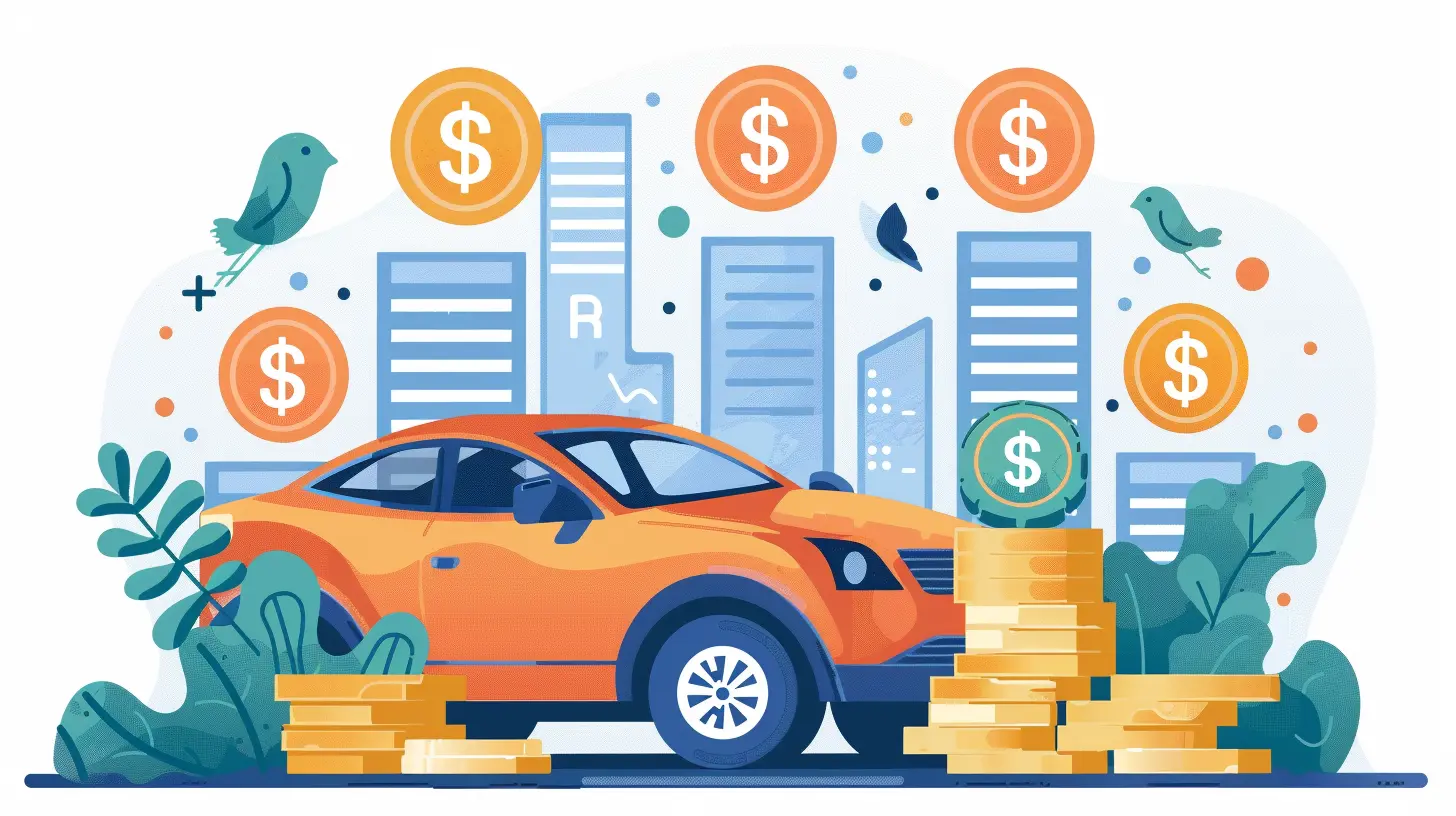Exploring the Gig Economy: Is Driving for Rideshare a Lucrative Side Hustle?
9 October 2025
Have you ever hopped into the front seat of a rideshare, chatted up the driver, and wondered, “Could I do this too?” You're not alone. The gig economy is booming, and driving for companies like Uber and Lyft has become one of the most talked-about side hustles out there.
But is it really worth it? Can you make decent money on your own schedule, or is it just a gas-guzzling grind that wears you out more than it fills your wallet?
Let’s buckle up and take a deep dive into the rideshare world—from the perks and pitfalls to the real numbers behind the wheel.
What Even Is the Gig Economy Anyway?
Before we talk cars and cash, let’s break down what the gig economy really means. Simply put, it’s a labor market where short-term, flexible jobs are the norm instead of long-term contracts or permanent positions.Think freelancers, delivery drivers, Airbnb hosts, and of course—rideshare drivers. You’re your own boss, setting your schedule and cashing in on your hustle.
Sounds great on paper, right? But like any job, it comes with trade-offs. Let’s shift gears and get into the reality of driving for rideshare apps.
Why Driving for Rideshare Sounds So Appealing
Let’s be real—people are drawn to this gig for a bunch of good reasons. Here’s why it seems like a dream side hustle for so many:1. Flexible Schedule
You clock in whenever you want. Whether you’re an early bird or a night owl, there’s no timecard, no boss breathing down your neck. That's a game-changer for folks balancing jobs, classes, or families.2. Instant Earnings
Unlike traditional jobs, many rideshare platforms offer same-day pay. Need to cover a surprise bill? Work a few hours and cash out that evening.3. Low Barriers to Entry
No fancy degrees required. If you have a car, a license, and a clean record, you’re probably good to go. It’s a great option if you're looking to start earning fast.4. You’re in Control
Want to drive more during holidays for surge pricing? Prefer to skip weekends altogether? You call the shots. That kind of autonomy isn't something you get in most 9-to-5s.
A Honest Look Under the Hood: What You Really Make
Alright, now let’s talk numbers—because that’s what you’re here for, right?The Average Take-Home Pay
On paper, rideshare companies often tout hourly earnings of $20–$30. But here's the catch: that doesn’t include expenses.After accounting for fuel, maintenance, insurance, depreciation, and platform fees, studies show that drivers typically make between $10 and $18 per hour.
Yes, you read that right. Those shiny earnings get dulled pretty fast once you factor in real-world costs.
Hidden Costs That Eat Into Your Profit
Let’s break down some of the common (and often underestimated) expenses:- Gas: This fluctuates wildly, and if you're in a city with traffic? You're burning fuel just sitting still.
- Wear and Tear: The more you drive, the more maintenance your car needs—brakes, tires, oil changes. It adds up.
- Insurance: Rideshare insurance isn’t always included in personal policies, and it can cost you more.
- Platform Fees: Uber and Lyft take around 25% of your fare. A $20 trip? You're only seeing $15, max.
Taxes? Yep, Those Too
You’re an independent contractor, not an employee. That means no taxes are taken out of your earnings—you’re responsible for managing your own, including self-employment taxes. Don’t forget to set aside around 20–30% just for Uncle Sam.
Is It Really a Side Hustle or Just Another Job?
It depends on how you approach it.Great Side Hustle If:
- You’re looking to make quick, short-term cash- You already own a reliable car
- Your area has high demand (cities, airports, nightlife zones)
- You’re strategic about driving during peak hours
- You’re good at budgeting and tracking expenses
Not Ideal If:
- You think of it as passive income (you’ve gotta work for every dollar)- You don't enjoy driving or dealing with people
- Your car is on its last legs
- You live in a rural area with low demand
- You're not disciplined with money and taxes
The Daily Reality: What It's Like Behind the Wheel
Let’s paint a picture here. You start your car, open the app, and wait. You accept a ride. You pick up a chatty college student headed to a night out. After that, a business traveler heading to the airport. Then a group of friends who had one too many drinks.It’s not just driving—it’s customer service, navigation, safety awareness, small talk, and serious patience. Some passengers are kind and respectful. Others… not so much.
And then there’s traffic. Oh, the traffic.
Sure, you’re free to work when you want. But if you want to maximize your earnings, that often means driving during peak hours—early mornings, late nights, holidays, and often in the worst traffic.
How to Maximize Your Rideshare Earnings
If you're still considering taking the wheel, here are some tips to help boost your profits:1. Drive Strategically
Don't just rely on luck. Use driver forums, local events calendars, and app heat maps to find the busiest (and most profitable) areas and times.2. Double Up on Apps
Use both Uber and Lyft. When one is slow, the other might be booming. Just be careful not to accept a ride on both at once!3. Track Your Expenses
Use apps or spreadsheets to monitor fuel, mileage, maintenance, and more. Come tax time, this will save your life—and your wallet.4. Keep Your Car in Good Shape
A well-maintained car is more fuel-efficient and less likely to break down mid-shift. That means less downtime and fewer unexpected costs.5. Be Friendly, But Set Boundaries
Great customer service can lead to tips. But your safety and sanity come first. Not every conversation needs to be a therapy session.Rideshare Horror Stories (And Why They Matter)
It’s not all sunshine and five-star ratings.Some drivers face harassment from passengers. Others get into accidents and discover their insurance doesn’t cover rideshare work. And then there’s the burnout—mental fatigue from long hours, unpredictable pay, and dealing with difficult riders.
It’s important to hear these stories not to scare you off, but to help you weigh the risks. This isn’t a side hustle you want to go into blindly.
What the Future Holds for Rideshare Drivers
Tech is changing fast. Autonomous cars are being tested, and regulatory battles are happening in courtrooms everywhere. Cities are cracking down on rideshare traffic, and some states are pushing for drivers to be classified as employees, not contractors.What does this mean for you?
It could affect your rights, benefits, and what you earn. Always keep an eye on the news if you're in the gig game—because the rules can (and likely will) change.
So, Is It Worth It?
Here’s the unfiltered truth: Driving for rideshare is not a get-rich-quick scheme. It’s a tool. Like any job, it works well in certain situations and can be a money pit in others.If you go in with wide eyes, a solid plan, and good financial management, it can be a flexible and moderately lucrative side income.
But if you’re not careful, you could end up trading your time—and your car’s life—for less than you bargained for.
Final Thoughts
So, should you give rideshare driving a try?Maybe. If the hours work for you, your car is up to the challenge, and you set realistic expectations, it can be a decent way to pad your wallet.
But before you commit, treat it like a business. Do the math. Understand the risks. And make sure this side hustle actually aligns with your goals—not just your gas tank.
Remember, in the gig economy, you’re the boss. Just make sure you're also the accountant, the mechanic, and the HR department while you’re at it!
all images in this post were generated using AI tools
Category:
Side HustlesAuthor:

Angelica Montgomery
Discussion
rate this article
1 comments
Esme Taylor
While driving for rideshare can offer flexibility and supplemental income, potential drivers should carefully assess costs, competition, and local demand to gauge true profitability.
October 18, 2025 at 2:37 AM

Angelica Montgomery
Thank you for your insightful comment! It's crucial for prospective drivers to evaluate these factors to understand the potential profitability of rideshare driving.


